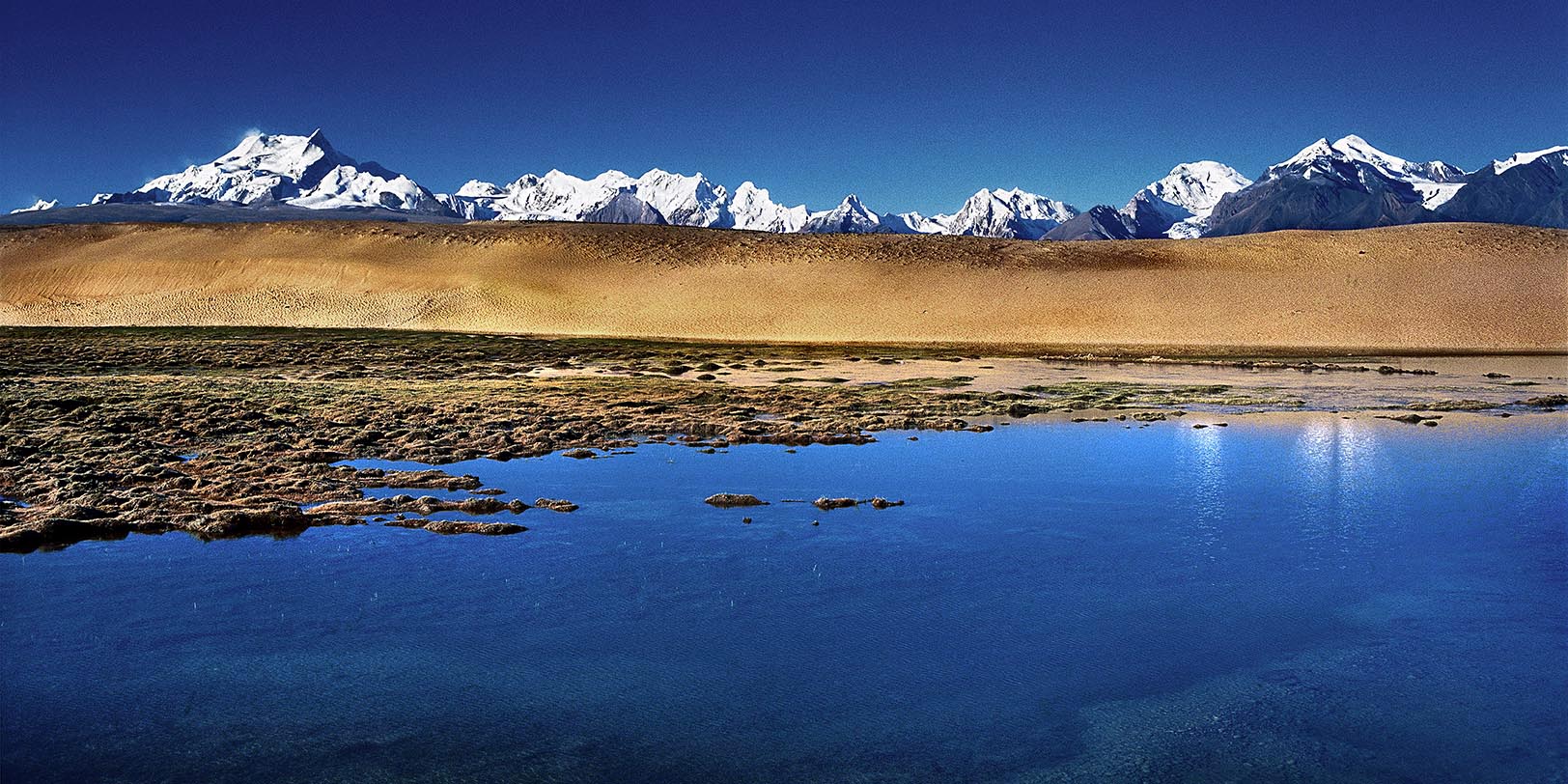
A voyage along the Himalayan rivers
Most of the Himalayan rivers are born at about 5000 m altitude on the Tibetan plateau. Over the course of about a hundred kilometres, they arrive at 300m altitude in the Indian plains. This impressive descent takes them through the deepest, most spectacular and least accessible gorges in the world.
Anyone wishing to climb to their springs must expect a perilous trip from suffocating tropical jungles to permanent snow, from the thick mists of the cloud forest up to the arid plateaus of the Tibetan flank. To follow the geography along the Himalayan waterways is to discover the extraordinary biodiversity of an overflowing Nature, which stacks ecologies from the hottest to the coldest, from the most humid to the most arid.
To learn more….
It is also to understand the challenges faced by the men who tried to survive here and benefit from the presence of water, while being wary of these dangerous rivers that gouge ravines and carry all before them.
To do this, they had to learn to control water. The genesis of these landscapes is not known in detail, but the history of water control appears to be a turning point in the colonisation of the Himalayas.
On the northern slope, dry and sheltered from the rains, irrigation allowed the stockbreeders to settle and colonise the more sheltered valleys.
On the southern slope, exposed to the vagaries of the monsoon, the mastery of irrigated rice growing has enabled a greater regularity of harvests and as a result denser human occupation. Irrigation is an effective guarantee against periods of drought that threaten other crops which depend solely on rain.
Today, a hiker crossing the Himalayan hills is struck by the extensive development of the slopes. Over several hundred meters of elevation, terraces are arranged in a staircase that seems endless. Each terrace is intended to reduce the slope and so mitigate the devastating effects of the rainfall which, with each storm, threatens to wash everything away.
The terraces may be made by one family, but the digging and maintenance of a water supply channel, sometimes several kilometres long, requires collective work. Under these conditions, all the rice farmers have to participate in the work. This is what determines their right to water.
This mountain rice growing which has been adopted by all and encouraged by the central government, requires communal practices. They illustrate the cohesion within a human group, even if that does not exclude struggling for the best terrain, whether it be inside the group or between ethnic groups.
In these grandiose and wild landscapes, cultivated land is like a humanised space, skilfully developed, regularly maintained, and manicured by thousands of hands.
These agricultural lands suspended on incredible slopes demonstrate the audacity and the obstinacy of men, but also their ingenuity and know-how for controlling water, which is an essential key to their survival in such hostile environments.


